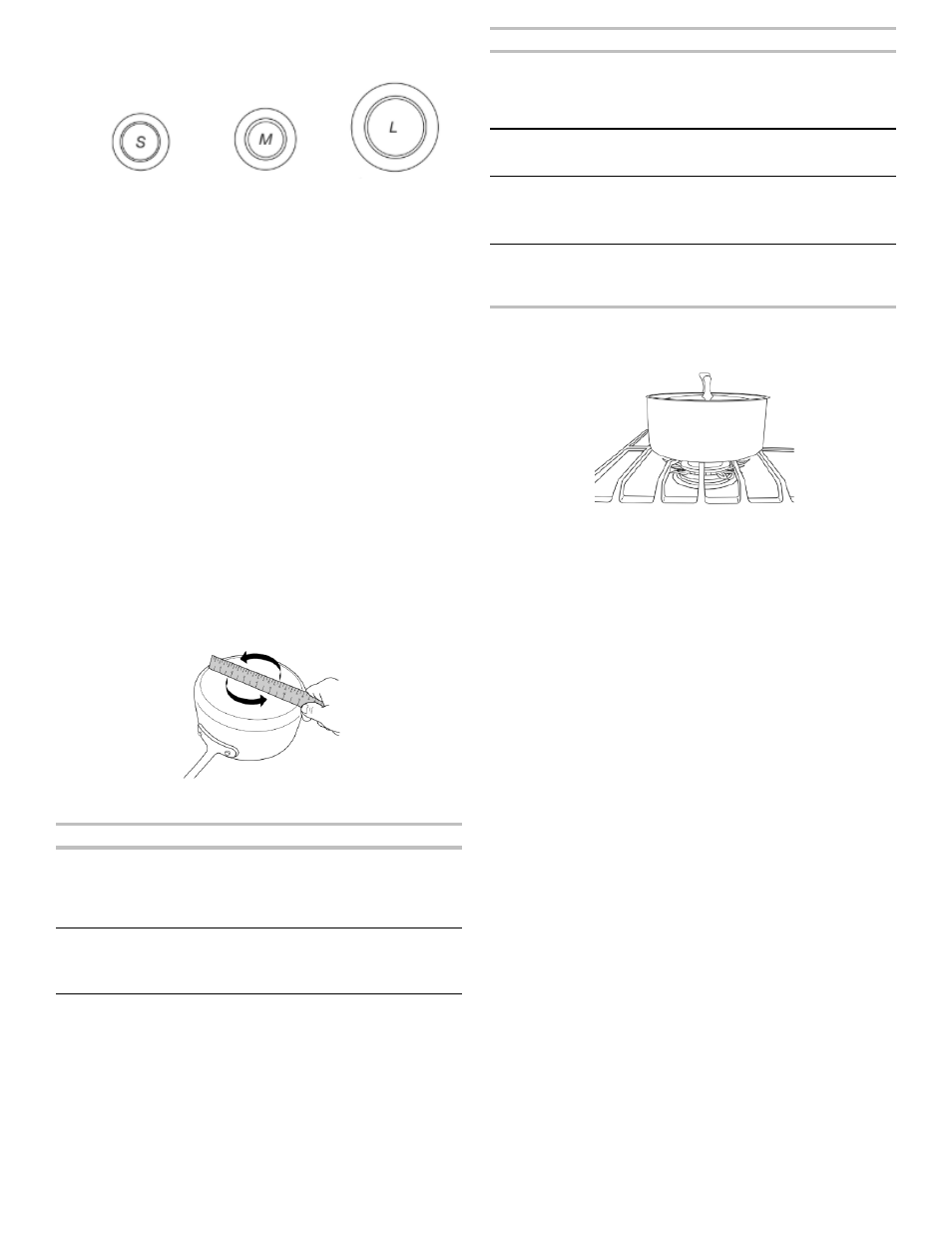Cookware_w11102912, Home canning_gfsr_cg, Oven use_w11122565 – KITCHENAID 30 Inch Freestanding Gas Range Control Guide Manuel d'utilisation
Page 5: Cookware, Home canning, Oven use

5
NOTE:
Each round burner base is marked with a letter
indicating the burner size.
Small cap (Auxiliary)
Medium cap (Semi
Rapid)
Large cap (Ultra
Rapid)
6.
Turn on the burner. If the burner does not light, check cap
alignment. If the burner still does not light, turn off the burner.
Do not service the burner yourself. Contact a trained repair
specialist.
Cookware
IMPORTANT:
Do not leave empty cookware on a hot surface
cooking area, element or surface burner.
Ideal cookware should have a flat bottom, straight sides and a
well-fitting lid, and the material should be of medium-to-heavy
thickness.
Rough finishes may scratch the cooktop or grates/coils. Aluminum
and copper may be used as a core or base in cookware. However,
when used as a base they can leave permanent marks on the
surfaces.
Cookware material is a factor in how quickly and evenly heat is
transferred, which affects cooking results. A nonstick finish has
the same characteristics as its base material. For example,
aluminum cookware with a nonstick finish will take on the
properties of aluminum.
Cookware with nonstick surfaces should not be used under the
broiler.
Check for flatness by placing the straight edge of a ruler across
the bottom of the cookware. While you rotate the ruler, no space
or light should be visible between it and the cookware.
Use the following chart as a guide for cookware material
characteristics.
Cookware
Characteristics
Aluminum
�
Heats quickly and evenly.
�
Suitable for all types of cooking.
�
Medium or heavy thickness is best for
most cooking tasks.
Cast iron
�
Heats slowly and evenly.
�
Good for browning and frying.
�
Maintains heat for slow cooking.
Ceramic or
Ceramic glass
�
Follow manufacturer’s instructions.
�
Heats slowly, but unevenly.
�
Ideal results on low to medium heat
settings.
Cookware
Characteristics
Copper
�
Heats very quickly and evenly.
�
May leave copper residues, which may be
diminished if cleaned immediately after
cooking.
Earthenware/
Stoneware
�
Follow manufacturer’s instructions.
�
Use on low heat settings.
Porcelain
enamel-on-
steel or cast
iron
�
See stainless steel or cast iron.
Stainless steel
�
Heats quickly, but unevenly.
�
A core or base of aluminum or copper on
stainless steel provides even heating.
For best results, the cookware should be centered above the
burner with the bottom sitting level on the grate. The flame should
be adjusted so that it does not extend up the sides of the pan.
Home Canning
When canning for long periods, alternate the use of surface
burners between batches. This allows time for the most recently
used areas to cool.
�
Center the canner on the grate above the burner.
�
Do not place canner on 2 surface burners at the same time.
�
For more information, contact your local agricultural extension
office or refer to published home canning guides. Companies
that manufacture home canning products can also offer
assistance.
OVEN USE
The normal operation of the range will include several noises that
may be heard each time the Bake or Broil burners ignite during
the cooking cycle:
�
Gas valves may make a “popping” sound when opening or
closing.
�
Igniters will “click” several times until a flame is sensed.
�
A “poof” sound is heard when a bake or broil burner ignites.
Odors and smoke are normal when the oven is used the first few
times or when it is heavily soiled.
IMPORTANT:
The health of some birds is extremely sensitive to
the fumes given off. Exposure to the fumes may result in death to
certain birds. Always move birds to another closed and well-
ventilated room.
NOTE:
On some models: The convection fan will shut off when
the oven door is opened. If the oven door remains open for too
long, the heating elements will shut off until the oven door is
closed. All timers, including any active Cook Time or Timed Cook
functions, will continue to count down.